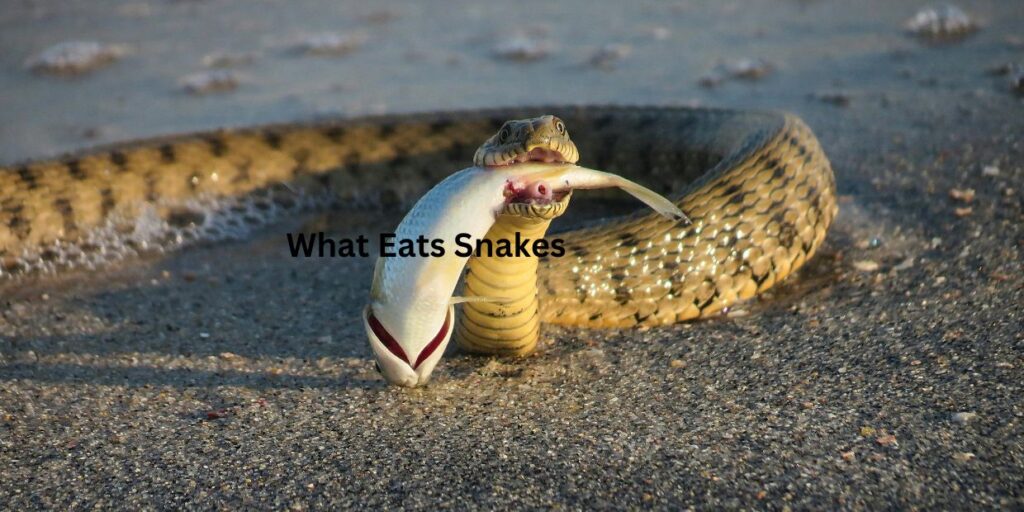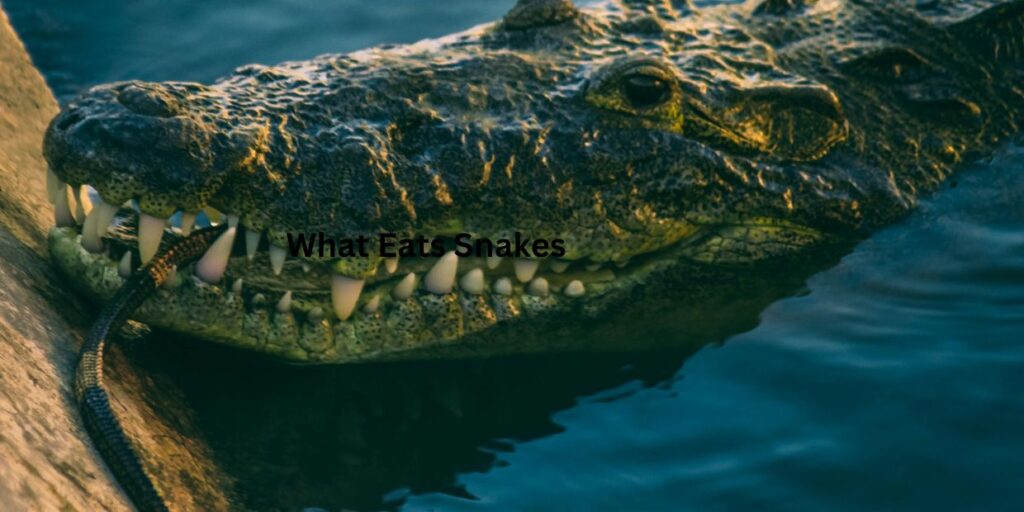What Eats Snakes? tapestry of the food web snakes often evoke a sense of fear and awe slinking through the underbrush with lethal grace. Yet these reptilian hunters are not the apex predators they are often perceived to be. A diverse array of creatures equipped with unique adaptations stand as formidable foes to these legless carnivores. Let embark on a journey through the wilds to discover the eclectic mix of animals for whom snakes are not a threat but a meal.
Mongoose | The Nimble Nemesis
The mongoose is renowned for its audacious confrontations with venomous snakes. With agility and genetic fortitude that renders it impervious to venom the mongoose is a snake bane. This small but fierce mammal engages in a deadly dance with serpents emerging victorious with a lethal bite. (What Eats Snakes?)
The Nimble Nemesis | A Tale of Survival
In the vast and varied tapestry of the animal kingdom the term Nimble Nemesis often refers to creatures that exhibit both agility and the ability to be formidable adversaries. These creatures often small and unassuming possess unique skills that allow them to survive and thrive in the face of danger.

Agility as a Survival Tactic
The concept of nimbleness goes beyond mere physical speed it encompasses the ability to think react and adapt quickly to changing circumstances. In nature this trait is a crucial survival mechanism. For instance the mongoose is a prime example of a nimble nemesis. Its swift reflexes and resistance to snake venom make it one of the few animals capable of taking on and defeating venomous snakes. The mongoose agility is not just physical but also mental as it must outsmart one of nature most lethal predators. (What Eats Snakes?)
The Predator-Prey Dynamic
The relationship between predator and prey is a delicate dance of life and death. The nimble nemesis while often the predator can also be the prey. This duality is best exemplified by the praying mantis. As a predator it uses its camouflage and lightning-fast strikes to capture insects. However it must also be vigilant and quick to evade its own predators such as birds and larger insects. The praying mantis ability to switch roles from hunter to hunted showcases the importance of nimbleness in survival. (What Eats Snakes?)
The Human Connection
Humans too can be considered a nimble nemesis in certain contexts. Our ability to adapt and innovate has allowed us to overcome countless challenges throughout history. From the development of tools to the creation of complex societies humans have demonstrated a remarkable capacity for agility. However this trait also carries a responsibility to use our abilities wisely and ensure the sustainability of the ecosystems we inhabit. (What Eats Snakes?)
Raptors | The Skyborne Sentinels
Among the avian adversaries of snakes the Red-tailed Hawk and the Snake Eagle soar high. With keen eyesight and swift talons these raptors descend upon unsuspecting snakes their rounded wings casting ominous shadows over their slithering prey. (What Eats Snakes?)
Skyborne Sentinels | Guardians of the Blue Expanse
The sky is a vast frontier home to a myriad of avian species that patrol the heavens. These Skyborne Sentinels are not just mere inhabitants of the air they are vigilant guardians that play a pivotal role in maintaining ecological balance. From the majestic eagles to the vigilant falcons these birds of prey are the embodiment of aerial supremacy. (What Eats Snakes?)
The Eagle Vigil
Eagles with their impressive wingspans and keen eyesight are the quintessential skyborne sentinels. They reign over their territories with a watchful gaze ready to swoop down on any threat with unmatched precision. The eagle role extends beyond predation it is a symbol of freedom and strength inspiring awe and respect across cultures and continents. (What Eats Snakes?)

Falcons | The Speedy Strategists
Falcons take the art of aerial hunting to new heights with their breathtaking speed and agility. These raptors are equipped with specialized flight feathers and aerodynamic bodies that allow them to dive at incredible velocities making them formidable hunters of the skies. Their presence is a testament to nature ingenuity in design showcasing evolution finesse in crafting perfect airborne predators.
The Role of Raptors in Ecosystems
Raptors including hawks and owlets serve as crucial components of their ecosystems. As top predators they help control populations of rodents and other small animals thus preventing overgrazing and crop damage. Their health and numbers are indicators of environmental health signaling the well-being of the biomes they oversee. The conservation of these skyborne sentinels is essential for the preservation of biodiversity and ecological integrity. (What Eats Snakes?)
Crocodiles | The Ambush Artisans
Lurking beneath the water surface the crocodile awaits with prehistoric patience. As masterful ambush predators they snatch any snake that dares to venture too close to their aquatic lairs.
Canines and Felines | The Opportunistic Omnivores
The fox and the tiger represent the mammalian predators of snakes. While the fox may scavenge for serpents with cunning stealth the tiger embodies brute strength capable of overpowering even the most formidable snakes. (What Eats Snakes?)
The Laughing Falcon | The Serpent Bane
(What Eats Snakes?) lush canopies of Mexico the Laughing Falcon named for its distinctive call specializes in hunting serpents. This feathered healer of the skies is a symbol of triumph over venomous foes.
Nocturnal Hunters | Owls and the Secrets of the Dark
When night descends the owl takes the stage. Silent and deadly owls utilize the cloak of darkness to ambush snakes their nocturnal prowess unchallenged.
The Unlikely Assassins | Snapping Turtles and Secretary Birds
Even the reptilian and avian realms have their snake specialists. The Snapping Turtle preys on unsuspecting snakes in murky waters while the Secretary Bird stomps its serpentine victims with long powerful legs on the African savannah.
Also Read This: zxtech
